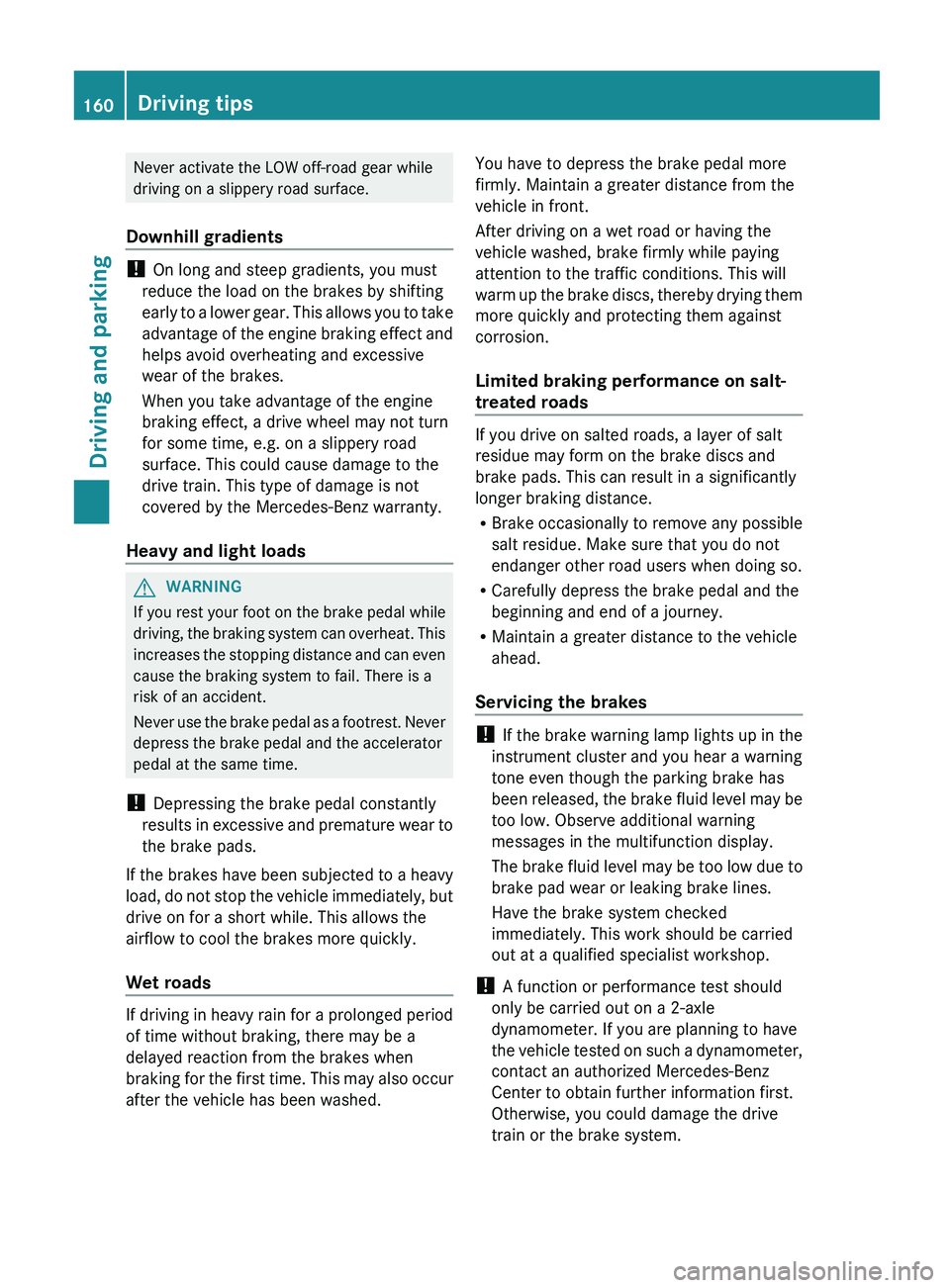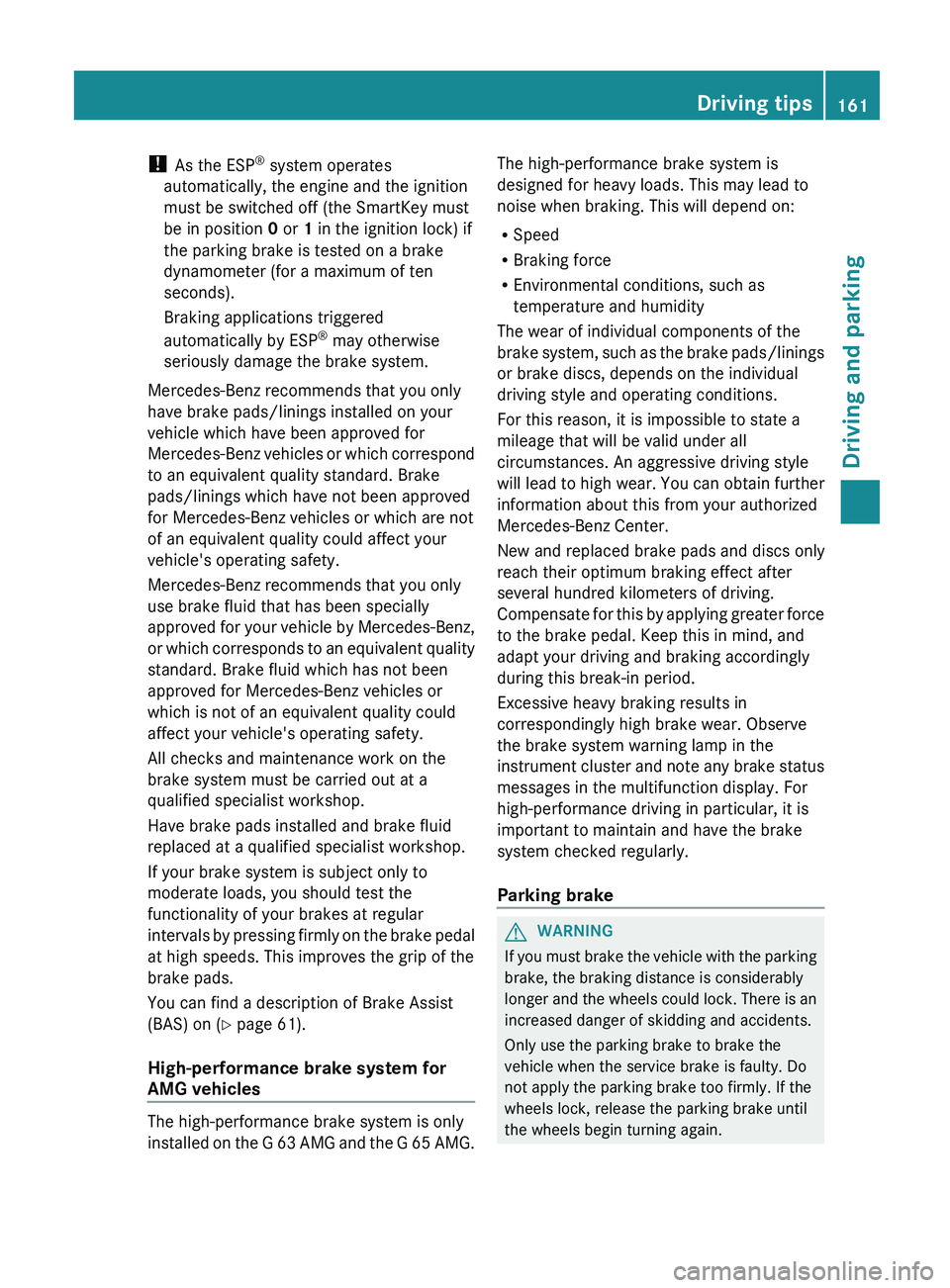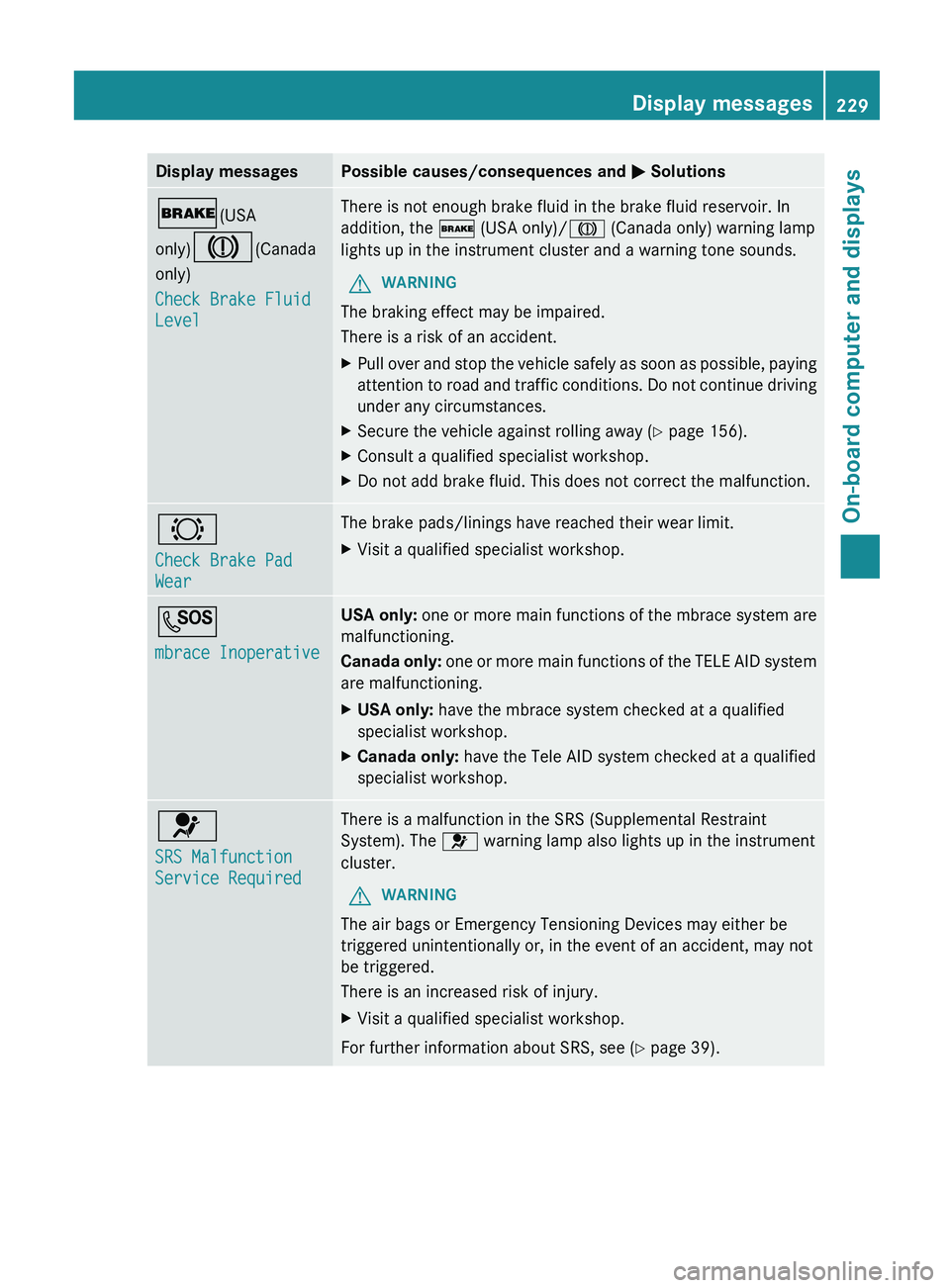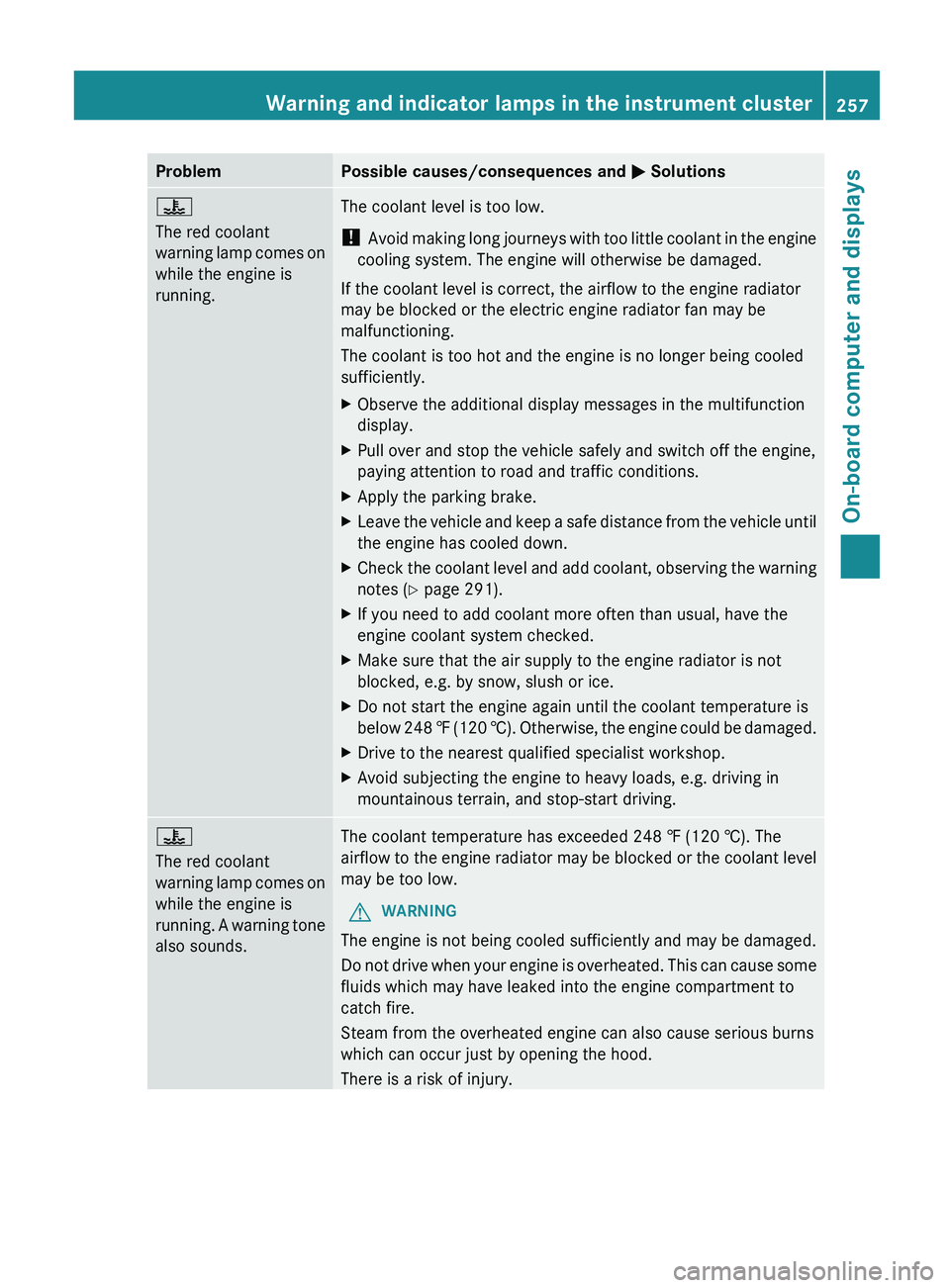2013 MERCEDES-BENZ G-CLASS SUV brake fluid
[x] Cancel search: brake fluidPage 7 of 364

Shift ranges
................................... 150
Steering wheel paddle shifters ...... 150
Trailer towing ................................. 149
Transmission position display
........146
Automatic transmission
emergency mode ............................... 153
Axle load, permissible (trailer
towing) ............................................... 358B
Backup lamp Changing bulbs .............................. 113
BAS (Brake Assist System) .................61
Battery Checking (SmartKey)
.......................70
Important safety guidelines
(SmartKey) ....................................... 70
Replacing (SmartKey) ...................... 71
Battery (vehicle)
Charging ........................................ 307
Display message ............................ 236
Important safety notes .................. 305
Jump starting ................................. 308
Overview ........................................ 305
Blind Spot Assist
Activating/deactivating ................. 218
Display message ............................ 240
Notes/function .............................. 186
see Active Blind Spot Assist
Brake fluid
Display message ............................ 229
Notes ............................................. 354
Brake fluid level ................................ 292
Brake lamps Adaptive ........................................... 62
Display message ............................ 232
Brakes
ABS .................................................. 61
BAS .................................................. 61
Brake fluid (notes) .........................354
Display message ............................ 226
Driving tips .................................... 159
High-performance brake system .... 161
Important safety notes .................. 159
Maintenance .................................. 160
Parking brake ................................ 157
Warning lamp ................................. 249 Breakdown
see Flat tire
see Towing away
Brush guard ....................................... 280
Bulbs Backup lamp .................................. 113
Brake lamp .................................... 113
Cornering light function .................110
Fog lamps ...................................... 110
Rear fog lamp ................................ 113
Tail lamp ........................................ 113
see Changing bulbs C
California Important notice for retail
customers and lessees ....................21
Calling up a malfunction
see Display messages
Care
Carpets .......................................... 300
Car wash ........................................ 295
Chrome parts ................................. 298
Display ........................................... 298
Gear or selector lever ....................299
Headlamps ..................................... 297
Interior ........................................... 298
Matte finish ................................... 296
Notes ............................................. 294
Paint .............................................. 296
Plastic trim .................................... 298
Power washer ................................ 295
Rear view camera .......................... 298
Roof lining ...................................... 300
Seat belt ........................................ 300
Seat covers .................................... 299
Sensors ......................................... 297
Steering wheel ............................... 299
Tail pipes ....................................... 298
Trim strips ..................................... 299
Washing by hand ........................... 295
Wheels ........................................... 296
Windows ........................................ 297
Wiper blades .................................. 297
Wooden trim .................................. 299 Index
5
Page 16 of 364

Remote control
Programming (garage door
opener) .......................................... 281
Reporting safety defects .................... 24
Reserve (fuel tank) see Fuel
Reserve fuel
Display message ............................ 237
Warning lamp ................................. 256
see Fuel
Residual heat
Switching on/off ........................... 134
Restraint systems
see SRS (Supplemental Restraint
System)
Reversing lamps (display
message) ............................................ 233
Roadside Assistance (breakdown) ....22
Roof lining and carpets (cleaning
guidelines) ......................................... 300
Route (navigation) see Route guidance (navigation)
Route guidance (navigation) ............214S
Safety Children in the vehicle .....................54
Child restraint systems ....................54
Safety system
see Driving safety systems
Seat backrest
Folding back .................................. 265
Seat belts
Adjusting the height ......................... 52
Belt force limiters ............................ 53
Cleaning ......................................... 300
Correct usage .................................. 49
Emergency Tensioning Devices ........ 53
Fastening ......................................... 50
Fastening, front ............................... 51
Fastening in the rear, center ............51
Important safety guidelines .............48
Releasing ......................................... 52
Safety guidelines ............................. 40
Special seat belt retractor ............... 56
Warning lamp ................................. 248
Warning lamp (function) ................... 53 Seat heating
Indicator lamp (malfunction) ............ 90
Seats
Adjusting (electrically) .....................86
Adjusting the 4-way lumbar
support ............................................ 89
Adjusting the head restraint ............ 86
Cleaning the cover .........................299
Correct driver's seat position ...........
84
Important safety notes .................... 85
Overview .......................................... 85
Storing settings (memory
function) .......................................... 95
Switching seat heating on/off ......... 89
Switching seat ventilation on/off ....90
Seat ventilation
Indicator lamp (malfunction) ............ 90
Sensors (cleaning instructions) .......297
Service interval display Displaying a service message (on-
board computer) ............................ 293
Service menu (on-board computer) . 218
Service products Brake fluid ..................................... 354
Coolant (engine) ............................ 354
Engine oil ....................................... 353
Fuel ................................................ 350
Important safety notes .................. 350
Notes ............................................. 350
Refrigerant (air-conditioning
system) .......................................... 354
Washer fluid ................................... 356
Setting a speed limit
see SPEEDTRONIC
Settings
Calling up a stored setting ............... 96
Factory (on-board computer) ......... 222
On-board computer ....................... 218
Setting the air distribution ...............131
SETUP (on-board computer) ............. 222
Shift ranges ....................................... 150
Side marker lamp (display
message) ............................................ 233
Side marker lamps (changing
bulbs) ................................................. 11214
Index
Page 21 of 364

Cruise control ................................
170
Distance warning ........................... 258
DISTRONIC PLUS ........................... 258
ESP ®
.............................................. 252
ESP ®
OFF ....................................... 253
Fuel tank ........................................ 256
LIM (DISTRONIC PLUS) ..................179
LIM (variable SPEEDTRONIC)
.........175
Overview .................................. 30, 247
Parking brake ................................ 255
PASSENGER AIRBAG OFF ................ 44
Reserve fuel ................................... 256
Seat belt ........................................ 248
SRS ................................................ 255
Tire pressure monitor .................... 259
Warning triangle ................................ 302
Warranty ............................................ 348
Washer fluid Display message ............................ 246
Wheel bolt tightening torque ...........344
Wheels Changing a wheel .......................... 340
Checking ........................................ 319
Cleaning ......................................... 296
Cleaning (warning) .........................341
Important safety notes .................. 318
Interchanging/changing ................340
Mounting a new wheel ................... 343
Mounting a wheel .......................... 341
Overview ........................................ 318
Removing a wheel ..........................343
Storing ........................................... 341
Technical data ............................... 344
Tightening torque ........................... 344
Wheel size/tire size ....................... 344
Window curtain air bag
Display message ............................ 230
Operation ......................................... 44
Windows
see Side windows
Windows (cleaning instructions) .....297
Windshield Defrosting ...................................... 131
Windshield heating ...........................133
Windshield washer fluid see Windshield washer system Windshield washer system
Adding washer fluid ....................... 292
Filling capacity ............................... 356
Notes
............................................. 356
Windshield wipers
Problem (malfunction) ...................116
Rear window wiper ........................115
Replacing the wiper blades ............ 115
Switching on/off ........................... 114
Winter
Driving in winter ............................. 163
Winter operation ............................ 320
Winter driving
Snow chains .................................. 321
Winter operation
Overview ........................................ 320
Winter tires
M+S tires ....................................... 320
Wiper blades
Cleaning ......................................... 297
Important safety notes .................. 115
Replacing ....................................... 115 Index
19
Page 162 of 364

Never activate the LOW off-road gear while
driving on a slippery road surface.
Downhill gradients !
On long and steep gradients, you must
reduce the load on the brakes by shifting
early to a lower
gear. This allows you to take
advantage of the engine braking effect and
helps avoid overheating and excessive
wear of the brakes.
When you take advantage of the engine
braking effect, a drive wheel may not turn
for some time, e.g. on a slippery road
surface. This could cause damage to the
drive train. This type of damage is not
covered by the Mercedes-Benz warranty.
Heavy and light loads G
WARNING
If you rest your foot on the brake pedal while
driving, the braking system
can overheat. This
increases the stopping distance and can even
cause the braking system to fail. There is a
risk of an accident.
Never use the brake pedal as a footrest. Never
depress the brake pedal and the accelerator
pedal at the same time.
! Depressing the brake pedal constantly
results in excessive and premature wear to
the brake pads.
If the brakes have been subjected to a heavy
load, do not stop the vehicle immediately, but
drive on for a short while. This allows the
airflow to cool the brakes more quickly.
Wet roads If driving in heavy rain for a prolonged period
of time without braking, there may be a
delayed reaction from the brakes when
braking for the
first
time. This may also occur
after the vehicle has been washed. You have to depress the brake pedal more
firmly. Maintain a greater distance from the
vehicle in front.
After driving on a wet road or having the
vehicle washed, brake firmly while paying
attention to the traffic conditions. This will
warm up the brake
discs, thereby drying them
more quickly and protecting them against
corrosion.
Limited braking performance on salt-
treated roads If you drive on salted roads, a layer of salt
residue may form on the brake discs and
brake pads. This can result in a significantly
longer braking distance.
R
Brake occasionally to remove
any possible
salt residue. Make sure that you do not
endanger other road users when doing so.
R Carefully depress the brake pedal and the
beginning and end of a journey.
R Maintain a greater distance to the vehicle
ahead.
Servicing the brakes !
If the brake warning
lamp lights up in the
instrument cluster and you hear a warning
tone even though the parking brake has
been released, the brake fluid level may be
too low. Observe additional warning
messages in the multifunction display.
The brake fluid level may be too low due to
brake pad wear or leaking brake lines.
Have the brake system checked
immediately. This work should be carried
out at a qualified specialist workshop.
! A function or performance test should
only be carried out on a 2-axle
dynamometer. If you are planning to have
the vehicle tested on such a dynamometer,
contact an authorized Mercedes-Benz
Center to obtain further information first.
Otherwise, you could damage the drive
train or the brake system. 160
Driving tips
Driving and parking
Page 163 of 364

!
As the ESP ®
system operates
automatically, the engine and the ignition
must be switched off (the SmartKey must
be in position 0 or 1 in the ignition lock) if
the parking brake is tested on a brake
dynamometer (for a maximum of ten
seconds).
Braking applications triggered
automatically by ESP ®
may otherwise
seriously damage the brake system.
Mercedes-Benz recommends that you only
have brake pads/linings installed on your
vehicle which have been approved for
Mercedes-Benz vehicles or
which
correspond
to an equivalent quality standard. Brake
pads/linings which have not been approved
for Mercedes-Benz vehicles or which are not
of an equivalent quality could affect your
vehicle's operating safety.
Mercedes-Benz recommends that you only
use brake fluid that has been specially
approved for your vehicle by Mercedes-Benz,
or which corresponds to an equivalent quality
standard. Brake fluid which has not been
approved for Mercedes-Benz vehicles or
which is not of an equivalent quality could
affect your vehicle's operating safety.
All checks and maintenance work on the
brake system must be carried out at a
qualified specialist workshop.
Have brake pads installed and brake fluid
replaced at a qualified specialist workshop.
If your brake system is subject only to
moderate loads, you should test the
functionality of your brakes at regular
intervals by pressing firmly on the brake pedal
at high speeds. This improves the grip of the
brake pads.
You can find a description of Brake Assist
(BAS) on ( Y page 61).
High-performance brake system for
AMG vehicles The high-performance brake system is only
installed on the
G
63 AMG and the G 65 AMG. The high-performance brake system is
designed for heavy loads. This may lead to
noise when braking. This will depend on:
R
Speed
R Braking force
R Environmental conditions, such as
temperature and humidity
The wear of individual components of the
brake system, such as
the brake pads/linings
or brake discs, depends on the individual
driving style and operating conditions.
For this reason, it is impossible to state a
mileage that will be valid under all
circumstances. An aggressive driving style
will lead to high wear. You can obtain further
information about this from your authorized
Mercedes-Benz Center.
New and replaced brake pads and discs only
reach their optimum braking effect after
several hundred kilometers of driving.
Compensate for this by applying greater force
to the brake pedal. Keep this in mind, and
adapt your driving and braking accordingly
during this break-in period.
Excessive heavy braking results in
correspondingly high brake wear. Observe
the brake system warning lamp in the
instrument cluster and note any brake status
messages in the multifunction display. For
high-performance driving in particular, it is
important to maintain and have the brake
system checked regularly.
Parking brake G
WARNING
If you must brake the vehicle with the parking
brake, the braking distance is considerably
longer and the wheels
could lock. There is an
increased danger of skidding and accidents.
Only use the parking brake to brake the
vehicle when the service brake is faulty. Do
not apply the parking brake too firmly. If the
wheels lock, release the parking brake until
the wheels begin turning again. Driving tips
161
Driving and parking Z
Page 231 of 364

Display messages Possible causes/consequences and
0050 Solutions0027(USA
only)004D(Canada
only)
Check Brake Fluid
Level There is not enough brake fluid in the brake fluid reservoir. In
addition, the
0027 (USA only)/004D (Canada only) warning lamp
lights up in the instrument cluster and a warning tone sounds.
G WARNING
The braking effect may be impaired.
There is a risk of an accident.
X Pull over and stop the vehicle safely as soon as possible, paying
attention to road and
traffic conditions. Do not continue driving
under any circumstances.
X Secure the vehicle against rolling away ( Y page 156).
X Consult a qualified specialist workshop.
X Do not add brake fluid. This does not correct the malfunction. 0026
Check Brake Pad
Wear The brake pads/linings have reached their wear limit.
X
Visit a qualified specialist workshop. 0053
mbrace Inoperative USA only:
one or more main
functions of the mbrace system are
malfunctioning.
Canada only: one or more main functions of the TELE AID system
are malfunctioning.
X USA only: have the mbrace system checked at a qualified
specialist workshop.
X Canada only: have the Tele AID system checked at a qualified
specialist workshop. 0075
SRS Malfunction
Service Required There is a malfunction in the SRS (Supplemental Restraint
System). The 0075 warning lamp also lights up in the instrument
cluster.
G WARNING
The air bags or Emergency Tensioning Devices may either be
triggered unintentionally or, in the event of an accident, may not
be triggered.
There is an increased risk of injury.
X Visit a qualified specialist workshop.
For further information about SRS, see (Y page 39). Display messages
229
On-board computer and displays Z
Page 251 of 364

Safety systems
Problem Possible causes/consequences and
0050 Solutions0027 (USA only)
004D (Canada only)
USA only:
the red
brake system warning
lamp is lit while the
engine is running. A
warning tone also
sounds.
Canada only: the
yellow brake system
warning lamp is lit
while
the engine is running. A
warning tone also
sounds. G
WARNING
The brake boosting effect is malfunctioning and the braking
characteristics may be affected.
There is a risk of an accident.
X Pull over and stop the vehicle safely as soon as possible, paying
attention to road and
traffic conditions. Do not continue driving
under any circumstances.
X Secure the vehicle against rolling away ( Y page 156).
X Consult a qualified specialist workshop.
X Observe the additional display messages in the multifunction
display. 0027 (USA only)
004D (Canada only)
USA only:
the red
brake system warning
lamp is lit while the
engine is running. A
warning tone also
sounds.
Canada only: the
yellow brake system
warning lamp is lit
while
the engine is running. A
warning tone also
sounds. There is not enough brake fluid in the brake fluid reservoir.
G WARNING
The braking effect may be impaired.
There is a risk of an accident.
X Pull over and stop the vehicle safely as soon as possible, paying
attention to road and
traffic conditions. Do not continue driving
under any circumstances.
X Secure the vehicle against rolling away ( Y page 156).
X Do not add brake fluid. Topping up will not remedy the
malfunction.
X Consult a qualified specialist workshop.
X Observe the additional display messages in the multifunction
display. Warning and indicator lamps in the instrument cluster
249
On-board computer and displays Z
Page 259 of 364

Problem Possible causes/consequences and
0050 Solutions00AC
The red coolant
warning lamp comes
on
while the engine is
running. The coolant level is too low.
!
Avoid making long
journeys
with too little coolant in the engine
cooling system. The engine will otherwise be damaged.
If the coolant level is correct, the airflow to the engine radiator
may be blocked or the electric engine radiator fan may be
malfunctioning.
The coolant is too hot and the engine is no longer being cooled
sufficiently.
X Observe the additional display messages in the multifunction
display.
X Pull over and stop the vehicle safely and switch off the engine,
paying attention to road and traffic conditions.
X Apply the parking brake.
X Leave the vehicle and keep a safe distance from the vehicle until
the engine has cooled down.
X Check the coolant level and add coolant, observing the warning
notes (Y page 291).
X If you need to add coolant more often than usual, have the
engine coolant system checked.
X Make sure that the air supply to the engine radiator is not
blocked, e.g. by snow, slush or ice.
X Do not start the engine again until the coolant temperature is
below 248 ‡ (120
†). Otherwise, the engine could be damaged.
X Drive to the nearest qualified specialist workshop.
X Avoid subjecting the engine to heavy loads, e.g. driving in
mountainous terrain, and stop-start driving. 00AC
The red coolant
warning lamp comes
on
while the engine is
running.
A warning tone
also sounds. The coolant temperature has exceeded 248 ‡ (120 †). The
airflow
to the
engine
radiator may be blocked or the coolant level
may be too low.
G WARNING
The engine is not being cooled sufficiently and may be damaged.
Do not drive when
your engine is overheated. This can cause some
fluids which may have leaked into the engine compartment to
catch fire.
Steam from the overheated engine can also cause serious burns
which can occur just by opening the hood.
There is a risk of injury. Warning and indicator lamps in the instrument cluster
257
On-board computer and displays Z